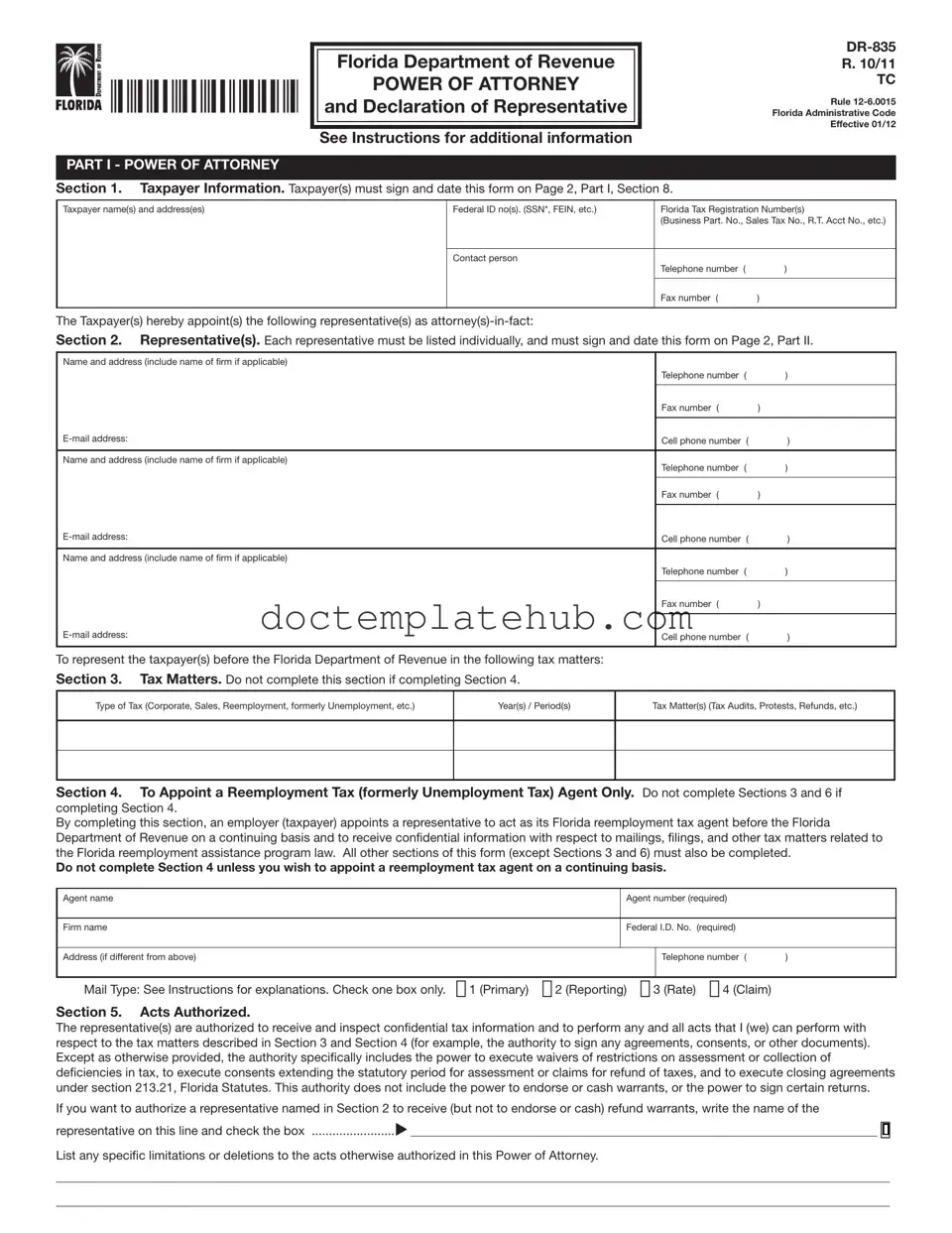What is the Tax POA DR 835 form?
The Tax POA DR 835 form is a Power of Attorney document specifically designed for tax purposes in the state of Colorado. It allows an individual or entity to designate another person to act on their behalf in matters related to state taxes. This includes the authority to communicate with the Colorado Department of Revenue regarding tax filings, payments, and any other tax-related issues.
Who can be designated as a representative on the Tax POA DR 835 form?
Any individual or entity can be designated as a representative on the Tax POA DR 835 form, provided they are competent to act in a legal capacity. This often includes tax professionals, such as accountants or attorneys, but can also be a trusted friend or family member. It is crucial that the appointed representative understands the responsibilities and implications of this role.
How do I complete the Tax POA DR 835 form?
Completing the Tax POA DR 835 form involves filling in specific details such as the taxpayer's name, address, and Social Security number or Employer Identification Number. Additionally, the representative’s information must be included. The form requires signatures from both the taxpayer and the representative, confirming their consent to the arrangement. It is important to ensure that all information is accurate to avoid any processing delays.
Is there a fee associated with filing the Tax POA DR 835 form?
Generally, there is no fee for submitting the Tax POA DR 835 form to the Colorado Department of Revenue. However, if the representative is a professional, they may charge for their services in preparing or submitting the form on your behalf. Always check for any updates or changes regarding fees by visiting the official Colorado Department of Revenue website.
How long does it take for the Tax POA DR 835 form to be processed?
The processing time for the Tax POA DR 835 form can vary. Typically, it may take a few weeks for the Colorado Department of Revenue to process the form and update their records. Once processed, both the taxpayer and the representative will receive confirmation of the Power of Attorney status. It is advisable to follow up if confirmation is not received within a reasonable timeframe.
Can I revoke the Tax POA DR 835 form after it has been submitted?
Yes, a taxpayer can revoke the Tax POA DR 835 form at any time. To do this, the taxpayer must submit a written notice of revocation to the Colorado Department of Revenue. This notice should include the taxpayer’s details, the representative’s information, and a clear statement indicating the desire to revoke the Power of Attorney. Once the revocation is processed, the representative will no longer have the authority to act on behalf of the taxpayer.
What should I do if my representative is not acting in my best interest?
If a representative is not acting in the taxpayer's best interest, the taxpayer has the right to revoke the Power of Attorney using the process mentioned above. It is essential to act promptly in such situations to protect one’s interests. Additionally, seeking advice from another tax professional may provide further guidance on how to address any issues arising from the representative's actions.
